For thousands of years, ancient societies all around the world erected massive stone circles, aligning them with the sun and stars to mark the seasons. These early calendars foretold the coming of spring, summer, fall and winter, helping civilizations track when to plant and harvest crops. They also served as ceremonial sites, both for celebration and sacrifice.

These megaliths — large, prehistoric monuments made of stone — may seem mysterious in our modern era, when many people lack a connection with, or even view of, the stars. Some even hold them up as supernatural, or divined by aliens. But many ancient societies kept time by tracking which constellations rose at sunset, like reading a giant, celestial clock. And others pinpointed the sun’s location in the sky on the summer and winter solstice, the longest and shortest days of the year, or the spring and fall equinox.
Europe alone holds some 35,000 megaliths, including many astronomically-aligned stone circles, as well as tombs (or cromlechs) and other standing stones. These structures were mostly built between 6,500 and 4,500 years ago, largely along the Atlantic and Mediterranean coasts.
The most famous of these sites is Stonehenge, a monument in England that’s thought to be around 5,000 years old. Though still old, at that age, Stonehenge may have been one of the youngest such stone structures to be built in Europe.
The chronology and extreme similarities between these widespread European sites leads some researchers to think the regional tradition of constructing megaliths first emerged along the coast of France. It was then passed across the region, eventually reaching Great Britain.
But even these primitive sites are at least centuries younger than the world’s oldest known stone circle: Nabta Playa.
Located in Africa, Nabta Playa stands some 700 miles south of the Great Pyramid of Giza in Egypt. It was built more than 7,000 years ago, making Nabta Playa the oldest stone circle in the world — and possibly Earth’s oldest astronomical observatory. It was constructed by a cattle worshiping cult of nomadic people to mark the summer solstice and the arrival of the monsoons.
“Here is human beings’ first attempt to make some serious connection with the heavens,” says J. McKim Malville, a professor emeritus at the University of Colorado and archaeoastronomy expert.
“This was the dawn of observational astronomy,” he adds. “What in the world did they think about it? Did they imagine these stars were gods? And what kinds of connections did they have with the stars and the stones?”
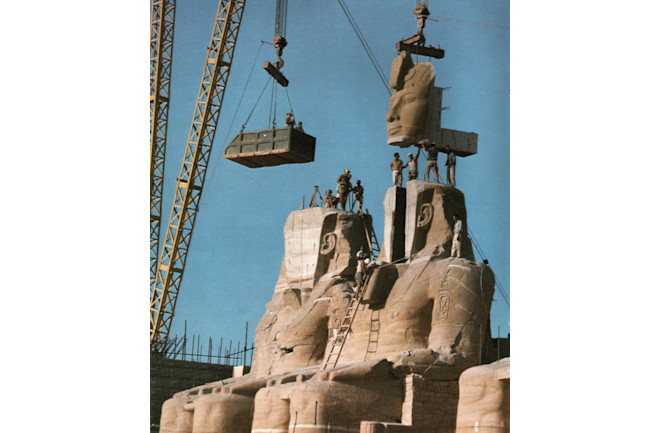
The Discovery of Nabta Playa
In the 1960s, Egypt was planning a major dam project along the Nile River that was going to flood important ancient archaeological sites. The United Nations Educational, Scientific and Cultural Organization (UNESCO), stepped in with funding to help relocate famous structures, as well as scour the area for new sites before they were lost forever.
But a prominent American archaeologist named Fred Wendorf saw another opportunity. He wanted to search for the ancient origins of Pharaonic Egypt, away from the Nile River.
“While everyone was looking at temples, [Wendorf] decided he would look at the desert,” says Malville. “He opened up the era of predynastic Egypt and the ancient kingdom.”
By luck, in 1973, a Bedouin — or nomadic Arab — guide named Eide Mariff came across a group of what looked like large, stone megaliths while crossing the Sahara. Mariff took Wendorf, who he had worked with since the 1960s, out to the site, which sits some 60 miles away from the Nile. Romuald Schild, Wendorf’s longtime friend and collaborator, remembers the discovery story differently. He says the entire team was driving across the desert in 1973 when they stopped for a bathroom break. Evidence of megalithic remains was lying on the surface.
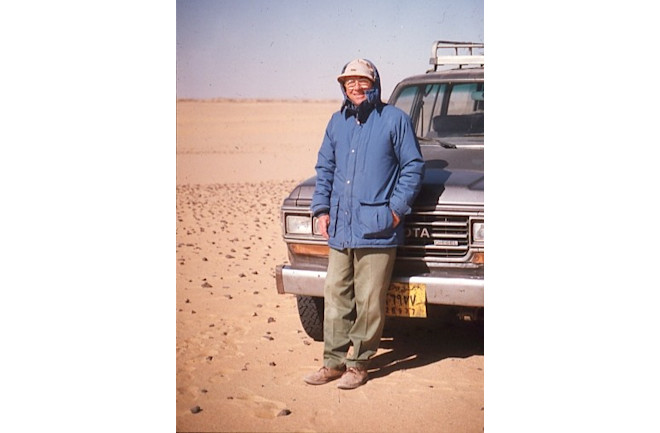
At first Wendorf thought they were natural formations. But he soon realized that the site was once a large lakebed that would have destroyed any such rocks. He would return many times over the course of decades. Then, during excavations in the early 1990s, Wendorf and a team of excavators, including Polish archaeologist Romuald Schild, uncovered a circle of stones that seemed to be aligned with the stars in some mysterious way.
“[To] Fred and myself, Nabta Playa stands amongst our dearest discoveries in prehistoric archaeology,” Schild says.
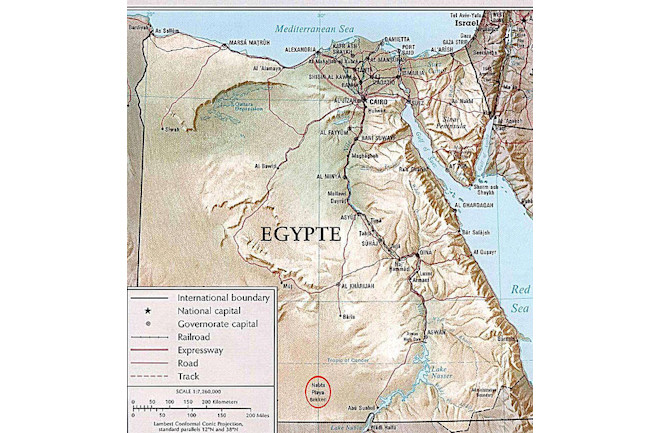
The First Astronomers
After seven years without being able to crack their mystery, Wendorf called in Malville, an expert on archaeoastronomy of the American Southwest.
Malville says he too was puzzled when he first looked at maps of the ancient site. He knew he had to travel there in person to get a sense of the place, as well as its creators and celestial significance.
They drove across the flat, sandy landscape until they reached a large sand dune beside a dry lake bed, where views stretched out to the horizon. There, they pitched their tents and set up camp. And while Malville sat in the sand beside the stones, he says he experienced “an epiphany.”
“I discovered that these stones were part of an alignment that radiated out from a major tumulus [burial mound],” he says. “A pile of these megaliths formed the covering of a tomb, and it turned out that every one of the megaliths that we found buried in sediment formed a line, like spokes in a wheel radiating out.”
The team had already performed radiocarbon dating on the site by taking samples from fire hearths and tamarisk roofing material found inside the stone circle.
“It was like a zen experience to see how this fit together,” he says. “Knowing the dates, I could calculate when these stones would have been in alignment with the brightest stars of the northern sky.”

He discovered that the stone circle once aligned to Arcturus, Sirius and Alpha Centauri. There were also stones that seemed to correspond to the constellation Orion. By tracing back Arcturus’ movements across the night sky, they proposed that the star would have matched up with Nabta Playa’s stone circle around 4800 B.C.
“That makes it the oldest astronomical site we’ve ever discovered,” Malville says. Their analysis was published in the journal Nature in 1998, drawing global headlines about a “Stonehenge in the Sahara.”
In the decades since then, archaeologists have continued to unravel the mystery of the ancient people of Nabta Playa, who used their summer home to observe the stars.
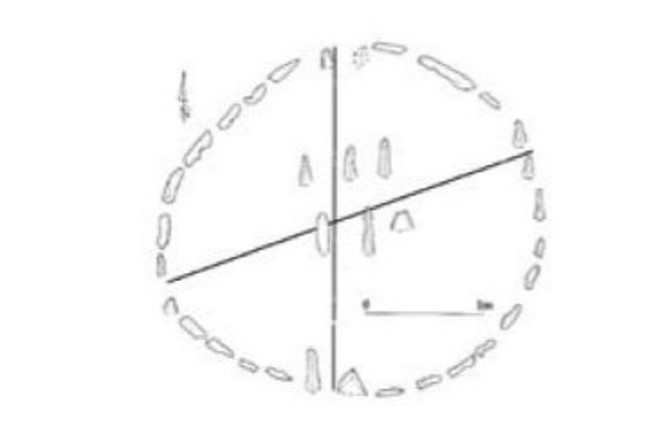
Cattle Cult
More than 10,000 years ago, Northern Africa shifted away from a cold, dry Ice Age climate that had persisted for tens of thousands of years. With the shift, African monsoons migrated north relatively quickly, filling up seasonal lakes, or playa, that provided short-lived oases for life.
For the nomadic people who lived in the area, these summer rains were likely sacred. During this era before agriculture had spread across the globe, these nomads survived primarily off of wild resources. But somewhere around the same time in the same region, people began domesticating goats, as well as an ancient kind of cattle called aurochs.
Cattle were a central part of Nabta Playa’s culture. When Wendorf’s team excavated the site’s central tomb, they hoped to find human remains. Instead, they dug up cattle bones and an enormous rock seemingly carved into the shape of a cow.
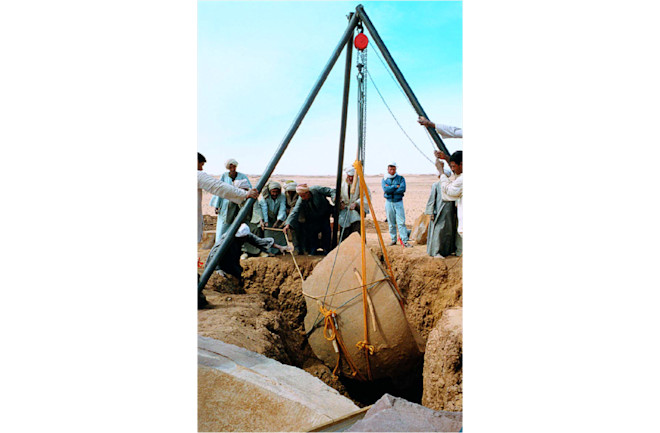
The people of Nabta Playa would travel across the often-featureless Sahara from seasonal lake to seasonal lake, bringing their livestock along to graze and drink.
“Their experience was rather similar to Polynesian navigators who had to sail from one place to another,” Malville says he suspects. “They used the stars to travel across the desert to locate small watering holes like Nabta Playa, which had water about four months of the year, probably, starting with the summer monsoon.”
There was no north star at the time, so the people navigated using bright stars and the circular motion of the heavens.
Wendorf himself had a powerful experience that cemented his belief in this idea. One day, while working at Nabta Playa, the team had lost track of time and had to drive back across the sand at night. Mariff, the Bedouin man who initially discovered Nabta Playa, took the wheel, navigating across the Sahara by sticking his head out the window to use the stars as his guide.
This kind of celestial navigation would have made Nabta Playa’s stone circle a powerful symbol to the ancient nomadic people. The stones feet would have been covered by seasonal water, and would have been visible from the western lakeshore.
“You would watch the reflection of the stars off the dark waters of the lake, and you could see the stones partly submerged in the water, lining up with the reflection of the stars on the horizon,” he says.
Ancient Breadbasket
Practically speaking, the megaliths would have also helped the people of Nabta Playa time the rainy season, which only became more important as the society developed over thousands of years. The summer solstice would have coincided with the arrival of the annual monsoons. So tracking the sun’s location could have tipped them off to the coming wet season.

The first strong evidence for people at Nabta Playa appears around the year 9000 BC. At the time, the Sahara was a wetter, more pleasant place to live. Eventually, there was enough water that people could even dig wells and build homes around them. One site excavated at Nabta Playa revealed rows of huts with hearths, storage pits, and wells that were spread out over several thousand square feet. The team of archaeologists called it a “well-organized village.”
But between 5000 B.C. and 3000 B.C., thousands of years after the stone circle was built at Nabta Playa, the region dried out again. Some researchers think this environmental stress could have forced the people of Nabta Playa to develop a complex society, which most scholars thought depended on the development of agriculture.
The ancient society studied the constellations and understood the movements of the night sky. They made sacrifices and worshiped gods. They made jewelry out of cow bones. They ground up pigments for body painting. Researchers even discovered fish carvings at the site that suggest the nomads traded as far away as the Red Sea. Finally, the stone slabs at the site — some of which stand nine feet tall — had to be dragged from more than a mile away.
However, this complex culture seems to have fallen somewhere in between nomadic and agrarian. In addition to the oldest astronomical site, Nabta Playa is also home to the oldest known remains of sorghum, a crop first domesticated in Africa that’s now one of the world’s most important foods, especially in the tropics.
Hundreds of sorghum seeds were found at Nabta Playa, and they appear to be more closely related to domestic sorghum than wild varieties. Millet, another crop critical to the global agricultural history, was also domesticated in the region. And excavations at Nabta Playa also turned up storage pits for grass seeds, tubers, legumes and fruits.
The nomadic people likely ate wild foods, but also planted some semi-domesticated crops along lakeshores at the beginning of each wet season. They then moved on after the harvest, Malville says.
The African sorghum and millet seeds domesticated in this area would eventually spread along a trade route stretching through the Red Sea and into India — where they arrived some 4,000 years ago and went on to play an important role in the development of numerous civilizations.
Black Genesis
By that time, the people who first grew the seeds were gone. Some 1,500 years earlier, the region had dried out, becoming what is now Earth’s hottest desert, the Sahara. Here, many areas don’t see rain for years.
That changing local climate forced the people of Nabta Playa to disperse. Some archaeologists think these people likely traveled south into Nubia, or modern day Sudan, as well as north into Egypt. And their migration would have taken place in the years just before the first pharaohs rose to power.
This timing had led some scholars to suggest the event sparked a “black genesis” for the cultural development in Egypt. However, the idea is controversial. Human remains at Nabta Playa seemed to be from people of both Central African and Mediterranean descent. However, some consider an ancient Egyptian cow goddess named Hathor, a goddess of fertility, to be the smoking gun for this origin story.
If these cattle-raising nomads did help establish the Nile Valley’s first civilization, Wendorf once told Discover, “it could explain the religious significance that Egyptians attached to the cow and cattle in the Old Kingdom.”
This idea has legitimate proponents, including Malville, who says that many Egypt scholars he’s talked to also like the idea of the Egyptian culture emerging out of Africa, rather than from the so-called “Fertile Crescent,” as others suggest. However, some conspiracy theorists have also run with the idea, adding a strange new layer. One theory — which has been debunked — suggested that the arms of Nabta Playa’s stone circle describe the distances to the stars they aligned with, and that the rock slab beneath the megalith is a map of our Milky Way galaxy.
For Malville, and Wendorf as well, who died in 2015, there’s no need to invent such stories for Nabta Playa to be fascinating. In many years spent exploring the Sahara, Wendorf and other archaeologists found a number of other stone circles, but they never again found anything remotely like Nabta Playa.
And now that there’s detailed photography of Earth’s entire surface, Malville says its only growing less likely that older or more complex astronomical sites are still hiding.
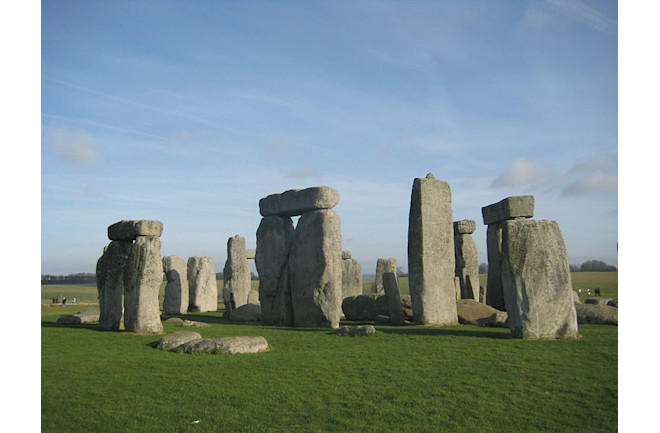
New Looks at the Neolithic
So why have so few people heard of Nabta Playa?
Gail Higginbottom, an archaeologist at University of Adelaide and expert on stone circles, says that Stonehenge still reigns supreme in the minds of Western civilization. After all, its stones are so big that they were never buried, and it’s long been easily accessible. That means Europeans have known of nearby Stonehenge for much of its 5,000 year history. But one leading megalith researcher contacted for this story said they weren’t even familiar with Nabta Playa.
Malville agrees with Higginbottom. He says Nabta Playa might not get as much attention as Stonehenge because it is significantly smaller, and up until a few decades ago, it was buried in sand in a remote region of Africa.
Trends in research also come and go. Egyptian archaeology was en vogue throughout the 19th and the 20th centuries.
“People used to be obsessed with pyramids and the historic cultures in North Africa,” Higginbottom says. But that fascination has waned over time. “However,” she adds, “I think this has had a big turn around in the last couple of decades with the Neolithic and earlier periods becoming more researched.”
Unfortunately, most of the popular coverage of Egyptian archaeology now fixates on pseudoscience and ancient aliens. And according to Malville, the extra attention Nabta Playa has gotten over the years hasn’t been good for the site, either.
After their study was published in 1998, tourists located the stone circle by plucking the latitude and longitude from the research paper. Soon, visitors were defacing the megaliths and standing up nearby stones that changed the site’s alignment.
“They ended up messing up the area, which had been pristine for 5,000 years,” Malville says.
In response, the government eventually moved all the stones — including the cow sculpture — to a museum in the region, where they’re remain on display for tourists to safely view.




